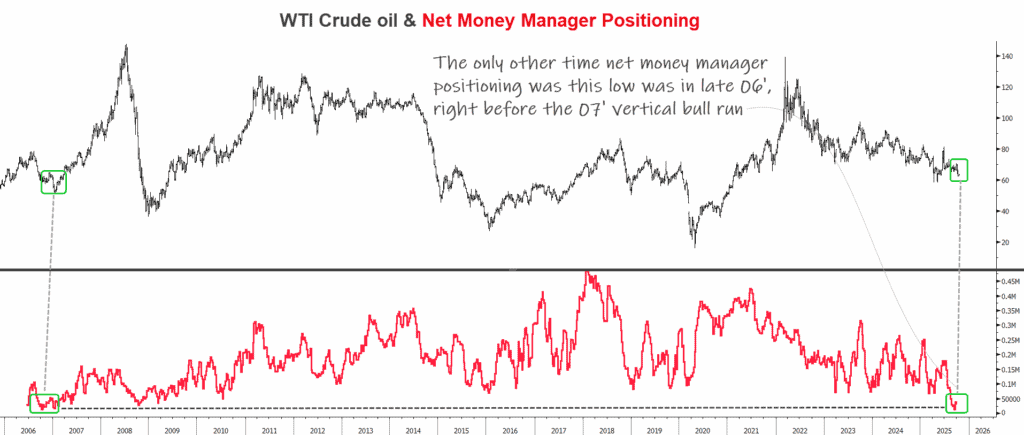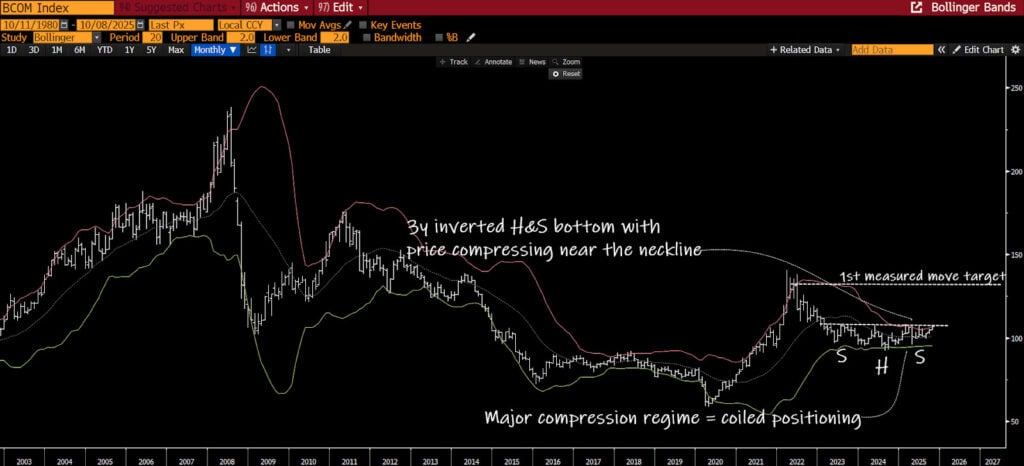Dan McMurtrie is the founder/portfolio manager of Tyro Partners. Tyro is a process-driven, fundamental, long-short equity hedge fund.
The fund’s compounded capital at a 25% CAGR over the last five years. But McMurtrie only recently burst onto the scene after Tyro’s famous Dating whitepaper (which you can read here).
McMurtrie’s latest Real Vision interview dives deep into decision-making optimization, utility versus intrinsic value, and pockets of market inefficiencies.
Let’s explore each of these ideas with my “Best Hits” from the interview. Note that text in bold is my emphasis.
Dan McMurtrie On How Your Health Can Affect Your Trading & Decision Making
“And what I started reading into was how your decision making got changed based on the conditions you’re in. And what I found is that your body is exposed to certain things for very extended periods of time, your ability to make even basic decisions is completely impaired. And that’s a really complicated topic, because as you mentioned, it can go into your health, I can go into your social circle, it can go into what your current level of risk is, what’s going on in the market.”
Optimal decision-making isn’t the result of “more reps” in front of the trading screen. Like weightlifting, most of the actual work happens outside the gym (or screens) — while we sleep or rest.
I can scan thousands of charts, looking for the perfect horizontal breakout pattern. But if I sleep like crap and my diet mirrors that of a Willy Wonka outtake, I’m screwed. I won’t take the trade. I won’t make the optimal choice.
The same thing happens in fundamental, bottom-up investing. Cliff Sosin of CAS Investment Partners explains decision-making as a function of two things: serendipity and a prepared mind. Here’s the quote (and I’m paraphrasing):
“It doesn’t matter if you spend all your time preparing your mind for an investment opportunity but forgo the time needed to allow serendipitous opportunities to surface.”
In other words, if you spend all your time reading 10-K’s and new S-1 filings, you forfeit your brain’s ability to deeply think about the potential opportunities in front of you.
Why It’s Not Ideal For Traders To Live Alone
“I’ve tried to structure my life to where people hit me over the head. What I’m doing is you start to go through a hard time, you start to self-isolate. So, on a given day, one of the things we started tracking was how many inbounds we have, how many outbound we have, how many conversations we’re having. One of the things you’ll notice during times of extreme stress for money managers, or really anything else is that number will drop by 60%, 70%, 80%, sometimes more.”
As a natural introvert, isolation is comfortable. But sometimes comfortable can kill. The beauty of a place like the Collective is that we can share in our struggles and engage with high-quality people when things go wrong.
I’m frequently reminded of the creation story in the Bible. Adam lived by himself for a while. But at some point, God decided it wasn’t good for man to live alone. There’s a lot to extrapolate there.
It’s not good for investors and traders to live alone. Iron sharpens iron and a three-corded rope is stronger than one.
Dan McMurtrie on the Importance of “Fat Pitches”
“And so, what you’re trying to do to stay in baseline so that you can just see the fat pitches again. You’re not trying to optimize the hard problems. I think one of the things is, especially when you’re stressed, your brain is trying to solve the hardest problem it can because you think about that subconsciously as removing the most stress.”
Solving (optimizing) hard problems is a social status symbol like angel investing or buying crypto kittens. It’s addicting and allows you to showcase intellectual dominance over others.
But that’s the wrong optimization problem in investing. Buffett said it best when he uttered, “I’m looking for two-foot hurdles.”
Anecdotally I’ve experienced this in semiconductor investing. Last year I spent a month dissecting the semiconductor space and its potential AI applications. Yet the industry moves so fast, I wonder what the value is of that research today.
We solve this problem by optimizing for fat pitches. By waiting for ideas that appear so obvious that it feels like a no-brainer. The Pabrai ‘hit-with-a-two-by-four’ feeling.
Here’s how we implement this “wait for fat pitches” mantra in our research process. We segment our research into three buckets:
- Current 3-5x potential in 3-5 year ideas
- VC-type bets with 100x potential and high probability of going to zero
- ROIC Champs — stocks that have increased ROIC at a 5% CAGR or higher the last five years
In other words, we’re learning about businesses we can invest in today, bets we can make for tomorrow, or companies we hope fall in price in the future. It’s evergreen content, nothing wasted.
Why You Should “Be Like Water” While Trading
“That’s really what kills you as an investor, because the world is whatever currently works. Somebody’s trying to figure out how to hack it and circumvent it. It’s very much like poker. If everybody’s playing in a certain way, somebody is going to figure out how to exploit that. Everybody’s playing really tight, people are going to figure out how to exploit that loose, people can exploit that.”
We’re huge fans of Bruce Lee at Macro Ops and one of our favorite quotes from him is “be like water.”
Being like water means going with the flow of the market. Not fighting upstream to earn returns “your way.”
Here’s a perfect example. I’m not a fan of “shitcos” and energy stocks. Alex loves them and trades such instruments with great success.
Yet the fact remains that energy stocks have carried our portfolio while my longer-term online/consumer/SaaS names lag.
That’s why it’s vital to “be like water.”
Dan McMurtrie on Asking Fundamental Questions
“And that’s really the question is what do I need to have a view on in order to take XYZ risk? And what can I manage? That’s the core question … . I want the bets that I need to know the littlest about, and a little about the world that contract that portfolio, because I’m essentially getting a higher Sharpe in terms of my process, regardless what the security path looks like.”
As Howard Marks says, asking fundamental questions is the essential thing in investing. But again, it’s hard to do in practice.
Why? Because asking fundamental questions begets opaque and often-times lower probability answers.
It’s easy to provide a specific answer to a question like “what will next quarter’s margins look like?”
But that’s the wrong question. Instead, we should ask, “how will customers view this company’s value proposition in 5-10 years compared to where its competitors are positioned?”
The latter question is significantly more fundamental (and important) than the prior ponderance but more challenging to answer.
Fundamental questions require “large” answers based on consumer psychology, switching costs, incentive structures, and industry dynamics.
However, the great thing about fundamental questions is that you don’t need a lot of them to develop an investment thesis.
Take 1stDibs (DIBS), for example. DIBS is a straight bet on (roughly) one fundamental view: Over time, people will get comfortable spending thousands of dollars for luxury design pieces online without seeing them in person.
Utility vs. Intrinsic Value As an Investor
“So, we’re trying to look at those types of things, and also try to figure out, we’re going to analyze the business, we’re also going to look at the security, what utility does the security offer to investors who are looking at it? And there are situations where over a short period of time, what a security ultimately offers is a way to take a large portfolio’s correlation down a little bit and add a little bit of return, and people are going to buy for that. It’s going to become self-fulfilling.”
Utility versus intrinsic valuation is a fascinating idea and a candidate for a more extended, separate essay. The main point McMurtrie makes is that people buy stocks for myriad reasons. Frankly, most of them are unrelated to a company’s discount to intrinsic value.
Usually, investors buy stock to receive (as McMurtrie says) a specific utility. Maybe it’s a particular exposure to an ESG thematic. Or perhaps it’s to window-dress the portfolio before an LP meeting.
It’s easy to miss these utility-driven purchase decisions as fundamental investors. Why? Because there’s a tendency to believe that all market participants are like us … searching for great businesses at discounted prices.
Reality is far different.
So how can we position ourselves to capture utility value? Be like water and understand how incentive structures and constraints drive allocations and fund flows.
Fads becoming permanent
“But one of the archetypes we look for in new strategies is something that in the past they’re looked down upon or considered foolish all of sudden starts working, and possibly might be it continues to work due to a structural change.”
Looking foolish in the past before becoming commonplace is an entire investment thesis in one sentence. Think about all the cult stocks you know: Yeti, Peloton, Lululemon, etc.
What did all these companies have in common? All of them looked foolish at the beginning, mostly from a price standpoint.
You probably heard questions like: How many people would pay $400 for a cooler? Who would want an iPad on a stationary bike for a monthly subscription? You paid how much for yoga pants?
Every purchase looked foolish in the beginning. But today, there’s Yeti coolers and LULU leggings everywhere.
We believe FIGS fits this thesis perfectly and you can read our thesis here.
How To Take Care of Your Mental Health As a Trader
“So, just put yourself in a position where you’re not going to lose your mind and you continue to do the average thing, you’ll have absolutely fantastic results.”
At Macro Ops, we’re ruthlessly focused on risk management and downside protection. We’re firm believers in Greenblatt’s mantra, “if you focus on the downside the upside will take care of itself.”
Downside protection starts in the investor’s mind and with taking care of your physical and mental health.
Why is downside protection so important in investing? Let’s use a hypothetical portfolio’s return figures.
Suppose we’re running XYZ Capital with $10M in AUM, and we spend the first five years compounding at 25% CAGR. That gets us to $30.5M by the end of our fifth year.
But then the unthinkable happens. We make wrong bets, hold too long, and compound our errors by revenge trading. We end Year 6 with a 45% drawdown.
That sends us back to $16.8M in AUM and erases three years of 25% annual returns.
Finally, let’s assume the fund generates ~18% per year until year ten after the 45% drawdown. That gets us to $32M in AUM by the end of year ten. In other words, exactly where we were in year 5.
Ouch.
Now suppose instead of a 45% drawdown, the fund only lost 15%. In that scenario, we’d end year 10 with over $50M in AUM, close to double our Year 5 figure.
The lesson: don’t put yourself in a position where you’ll lose your mind and blow up.
I hope you enjoyed the Best Hits version of Dan’s latest interview. If you haven’t had a chance to check out my podcast with Dan, listen to it here. You can also read the podcast transcript here.








